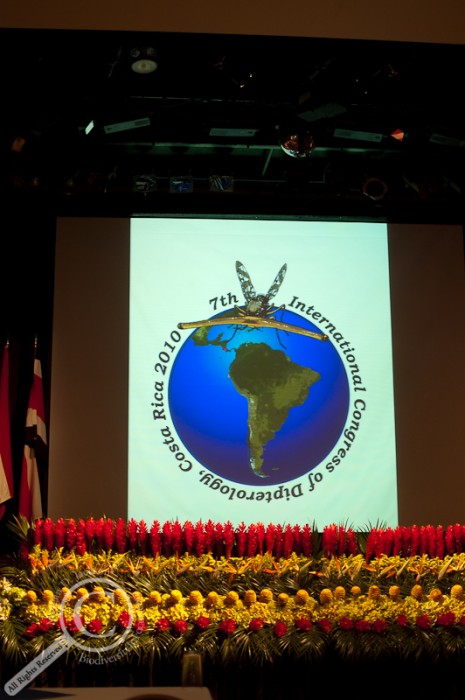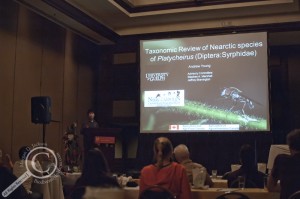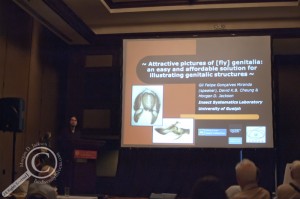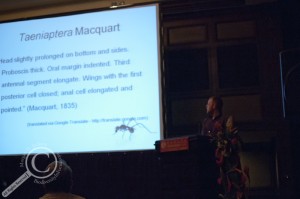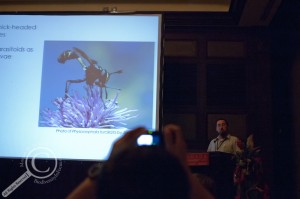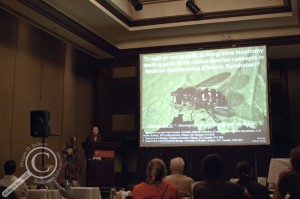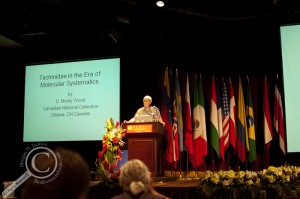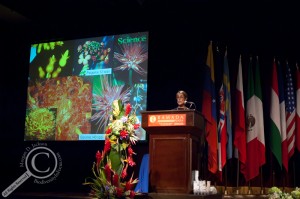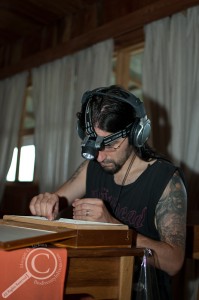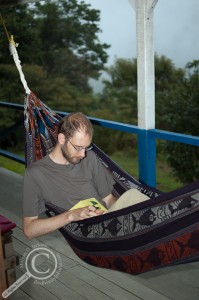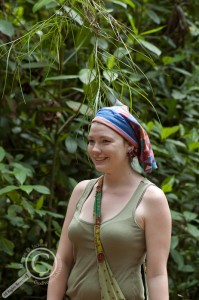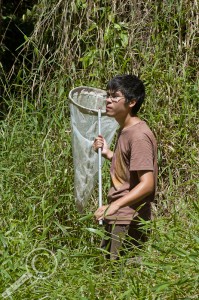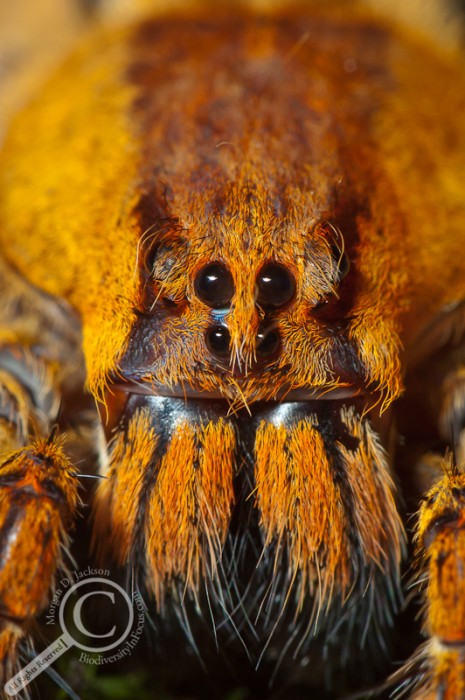5:30am and the sun is just peeking over the mountains; time to go birding! Without leaving the grounds of the lodge, we had a good hour of birding before breakfast with about 20 species confidently identified. A hearty breakfast of arrepes (dense pancakes), eggs, and honey and we were off. Beto needed to walk into town today for groceries, so we had to fend for ourselves on the trails. Gil wanted to revisit the grassy bog at the top of the mountain, so he lead us on a break-neck death march, getting us to the top around 8am. After about 3 hours of steady collecting we came back down at a leisurely pace, collecting and shooting when we found something worthwhile. Unfortunately there didn’t seem to be as much moving around today, so it wasn’t quite as good as yesterday, but we did manage to find 2 genera of Micropezidae that we hadn’t seen yet. I experienced how cold the mountain-fed showers were after we got back (and they were cold alright, but refreshing after the hike) then Patricia called us in for lunch (marinated chicken, potato & beet salad, broccoli, and of course, rice). The clouds were beginning to look ominous, but Patricia reassured us that it wouldn’t rain this afternoon, no problemo. Turns out she was a little off, as half an hour later the clouds opened and it started pouring!
Before dinner and during a lull in the rain, Joel, Andrew and I figured we better set up the malaise trap, since we brought it all this way! Now, this isn’t your ordinary, off-the-shelf malaise trap! Oh no, this is a hack job that Joel and I put together at the last minute while packing last week. The netting itself has long seen better days and the head was composed of a urine sample vial with the bottom cut out, a plastic pasta sauce jar with a hole cut in the side and a mason jar screwring glued to the mouth, finished off with a large Nalgene screwed underneath, plus a healthy proportion of duct tape and hot glue! We decided to set up the trap across a small trail in the hopes that the local flies would be using it as a super highway, and strung it up with a few dozen feet of twine and some sticks acting as pegs. We had high hopes for our contraption, but when the urine vial peeled off the pasta jar, and we added a few more feet of duct tape, we began to think we were fighting a losing battle. Perseverance, plus some more twine and duct tape, and we were set to catch us some insects! It started raining right before we finalized the set up, so we didn’t have time to really admire our handiwork, but hopefully it’ll still be in one piece and standing tomorrow morning. A quick run through the jungle in the rain to avoid getting my camera gear wet and we were back at the lodge and ready for dinner! Another excellent dinner (marinated cubed beef, pasta, rice, dulce square) was followed with a long conversation with Beto & Patricia about the history of El Copal, the environmental issues facing Costa Rica, and how we came to find out about El Copal. I truly can’t express how great this lodge and the owners are! Conversation was cut short (a figurative term as we sat there talking for over an hour) when Beto ran out listening to an owl. We never did see the owl, but the sky was so clear, the star viewing was even better than last night. I spent a good half an hour making new images of the Milky Way, before going inside to show the others what I had captured. Beto & Patricia in particular were very excited to see the shots and also some of the insects that we’ve encountered on their property. While everyone else headed off to bed, I saw that the star conditions had further improved, so I spent another hour outside playing and making images. By far and away the most amazing nightscapes I’ve ever seen, and I couldn’t be happier with the pictures (they need some more advanced post-processing, but I’ll have them up here shortly after getting back to Canada).
We came across a huge colony of army ants swarming the trail this morning, providing a nice break from the brisk pace Gil set. Seeing thousands of ants swarming through the undergrowth is a pretty neat experience. Collected some army ant-associated thick-headed flies (Conopidae: Stylogaster) and Tachinidae.
Gil had me try and get some shots of hovering Ornidia (Syrphidae), which presented a new challenge that will need some practice, despite the flies staying relatively still while hovering.
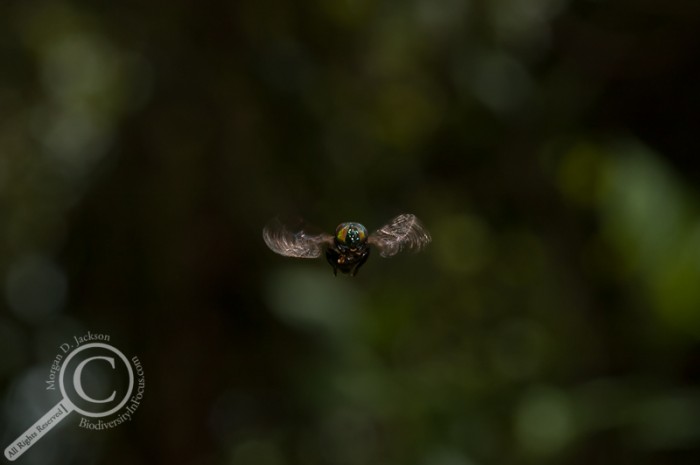
MTC…

